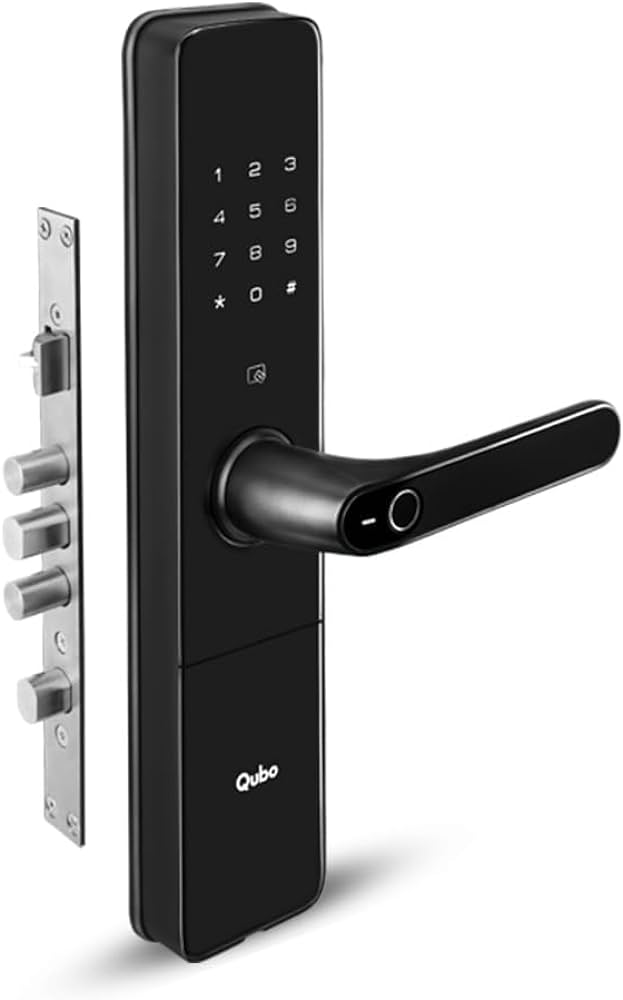Smart locks offer convenience and control over your home security, but have you ever pondered the possibility of their susceptibility to hacking? Check Smart Lock in Hyderabad, Gurgaon and Delhi
As technology advances, so do the methods of cyber intruders looking for vulnerabilities to exploit. The intricacies of smart lock systems may harbor hidden risks that could leave you questioning the sanctity of your digital fortress. Also Read Digital door lock in Hyderabad , Delhi, Gurgaon
Common Vulnerabilities in Smart Locks
- Smart locks, despite their convenience, often exhibit common vulnerabilities that can compromise their security integrity. Conducting a vulnerability assessment is crucial to identify and address these potential weak points.
- One common vulnerability in smart locks is insufficient encryption protocols, which can make them susceptible to hacking attempts. Hackers may exploit this weakness to intercept communication between the lock and the mobile app, allowing them to unlock the door without authorization.
- Another issue is related to inadequate cybersecurity measures in the lock’s firmware. Outdated firmware may contain known vulnerabilities that hackers can exploit to gain access to the lock’s system. Regular firmware updates are essential to patch these vulnerabilities and enhance the lock’s security.
- Additionally, weak passwords or default settings can pose a significant risk to smart locks. Implementing strong, unique passwords and changing default settings can help prevent unauthorized access to the lock.

Methods Used to Hack Smart Locks
- Utilizing sophisticated techniques, hackers can exploit vulnerabilities in smart locks to gain unauthorized access to secured premises. One common method used to hack smart locks is through social engineering. This technique involves manipulating individuals into revealing sensitive information that can be used to bypass the smart lock’s security measures. For instance, a hacker might impersonate a trusted individual or pose as a legitimate service provider to trick users into sharing their access credentials.
- Another method hackers employ is exploiting software vulnerabilities present in smart lock systems. By identifying weaknesses in the lock’s software, hackers can potentially gain unauthorized entry without the need for physical keys or legitimate access codes. These vulnerabilities can range from unpatched software bugs to insecure network connections, providing entry points for cybercriminals to exploit.
- To safeguard against these hacking methods, it’s crucial for smart lock manufacturers to regularly update their software, implement robust authentication mechanisms, and educate users about the risks of social engineering tactics. Additionally, users should remain vigilant and avoid sharing sensitive information with unknown or unverified sources to enhance the security of their smart lock systems.
Real-Life Examples of Smart Lock Hacks
- When considering the ramifications of methods used to hack smart locks, real-life examples serve as stark reminders of the vulnerabilities present in these security systems. Security implications are vividly illustrated by instances where smart locks have been compromised. For example, in 2016, a vulnerability in a popular smart lock system allowed hackers to intercept the owner’s Wi-Fi network credentials, leading to unauthorized access to the home. This breach highlighted the critical need for robust encryption protocols in smart lock technology.
- Ethical concerns also arise from real-life smart lock hacks. In another case, researchers demonstrated how a vulnerability in a smart lock could be exploited to gain entry into a secure facility. This raised questions about the responsibility of manufacturers to prioritize security in their products, as well as the potential consequences of relying solely on technology for access control. These examples underscore the importance of continuously assessing and addressing security vulnerabilities in smart lock systems to protect users and their assets.
How to Safeguard Your Smart Lock
How can you enhance the security of your smart lock system to mitigate potential vulnerabilities effectively?
- To safeguard your smart lock, it’s crucial to implement robust security measures and adhere to advanced encryption protocols. Begin by ensuring that your smart lock system receives regular firmware updates to patch any known security vulnerabilities. Additionally, enable two-factor authentication to add an extra layer of protection against unauthorized access attempts.
- Furthermore, consider integrating a virtual private network (VPN) to encrypt communication between your smart lock and connected devices, preventing potential interception of data by malicious actors. Utilizing strong, unique passwords for both your smart lock and associated accounts is paramount in securing your system. Regularly monitor the activity logs of your smart lock to detect any suspicious behavior promptly.
Future Trends in Smart Lock Security
- To fortify the security of smart locks in the future, staying ahead of emerging threats and continuously evolving encryption methods will be imperative. Biometric authentication, such as fingerprint or facial recognition, is anticipated to play a pivotal role in enhancing smart lock security. By incorporating biometric data, smart locks can significantly reduce the risk of unauthorized access compared to traditional key-based or keypad systems.
- Moreover, advancements in encryption protocols will be crucial in bolstering the defense mechanisms of smart locks against potential cyber threats. Implementing robust encryption algorithms and regularly updating encryption keys are essential practices to mitigate the risk of hacking attempts. Additionally, the adoption of multi-factor authentication, combining biometric data with traditional password mechanisms, can provide an extra layer of security to prevent unauthorized entry.
- As technology continues to evolve, smart lock manufacturers must prioritize investing in research and development to enhance the resilience of their products against sophisticated hacking techniques. By embracing biometric authentication and leveraging advanced encryption protocols, the future of smart lock security holds promise in safeguarding homes and businesses from unauthorized intrusions.
Conclusion
In conclusion, smart locks can be susceptible to hacking due to common vulnerabilities such as weak encryption and poor authentication methods. Hackers can utilize various methods to compromise these devices, as demonstrated in real-life examples. To safeguard your smart lock, it’s essential to regularly update firmware, use strong passwords, and enable multi-factor authentication. As technology advances, future trends in smart lock security will continue to evolve to address these threats and enhance overall protection.